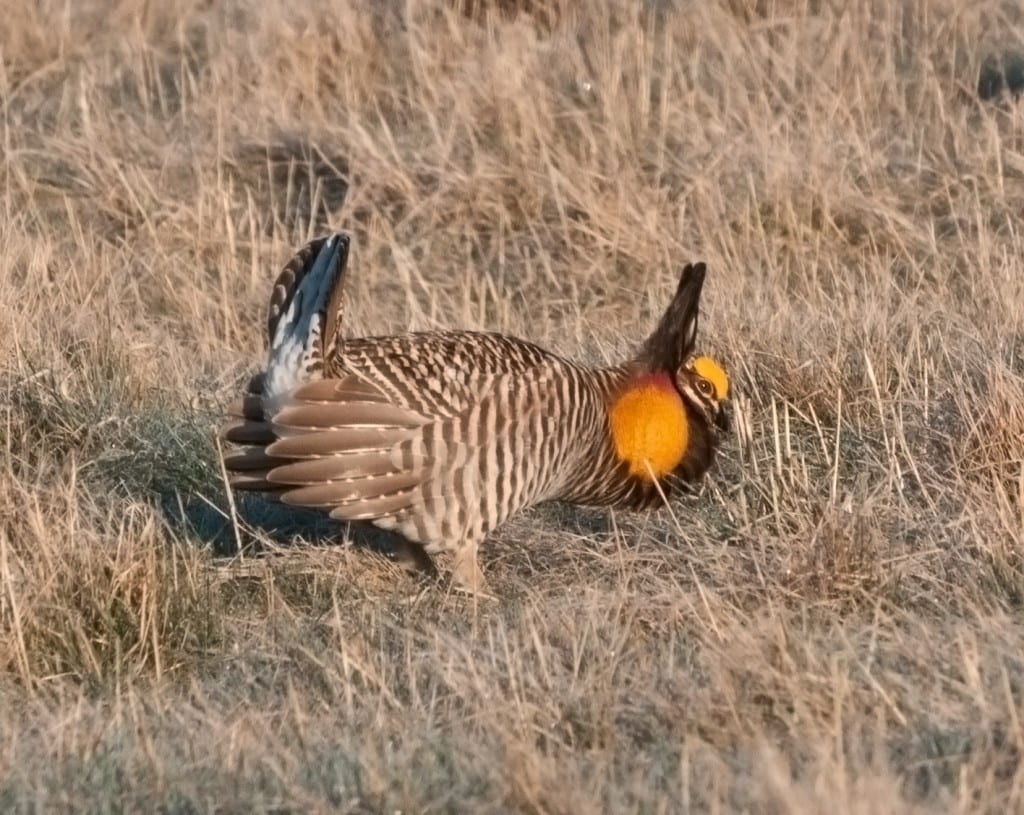Spring brings many new things with it as it approaches (rather early this year I might add). One of the most interesting and entertaining things I have experienced is Prairie Chicken Booming. I had no idea what to expect on this trip, but I was in for a real treat.

Prairie Chickens are one of four native grouse (Ruffed Grouse, Sharp-Tailed Grouse, and Spruce Grouse). Prairie Chickens prefer grasslands for nesting, brood-rearing, roosting, feeding, and loafing. They also prefer wide horizons which allow them to see and be seen for great distances.

What is Prairie Chicken Booming? It is the courting of a female Prairie Chicken by multiple anxious male suitors. In the spring, males (cocks) gather on booming grounds or leks. Males battle each other for the small territories (50 feet in diameter) with displays, postures, and physical combat. Cocks occupy the same territories every morning during the mating season. At the end of these battles some of the males end up pretty battered and bloodied. Besides fighting for the ladies’ attention, cocks advertise with foot stomp dances, displaying feathers, orange eyebrows and air sacs, snapping tail feathers, and “booming” which can be heard greater than one mile away on still mornings. Booming is a three note call that is enhanced by their inflated air sacs. When females (hens) are present, cocks intensity their displays by adding a “whoop” to their three note boom. As I sat out in the brisk morning air I compared the Prairie Chickens to cartoon characters with their eccentric jumping and curious sounds.
Prairie Chickens have a pretty interesting back-story as well. In the early 1900’s Prairie Chickens flourished and were hunted until 1955. Grassland habitat began to disappear due to farming, tree planting, and natural succession and in turn the Prairie Chicken numbers plunged. The best remaining populations were in central Wisconsin and initial land was acquired on the Buena Vista Marsh in 1954. Drs. Frederick and Frances Hamerstrom were instrumental when it came to the preservation of this species. They both studied under Aldo Leopold who was an avid environmentalist and brilliant professor from the University of Wisconsin. The Hamerstroms revolutionized wildlife study with their work on Prairie Chickens. Through their research and commitment they preserved the existence of Prairie Chickens in Wisconsin. It is because of them that we still have this unique bird in our state.


Wow, Fantastic Blog, it’s so helpful to me, and your blog is very good,I’ve learned a lot from your blog here, Keep on going, my friend, I will keep an eye on it.
natural stamina enhancement
A great thread you have. It’s very informative, i’ve read a lot of information in here. Hope to see more post like this.
holland blind
Very interesting. I hope to take part in such trips once I’m there in September!
WOW! This is awesome!